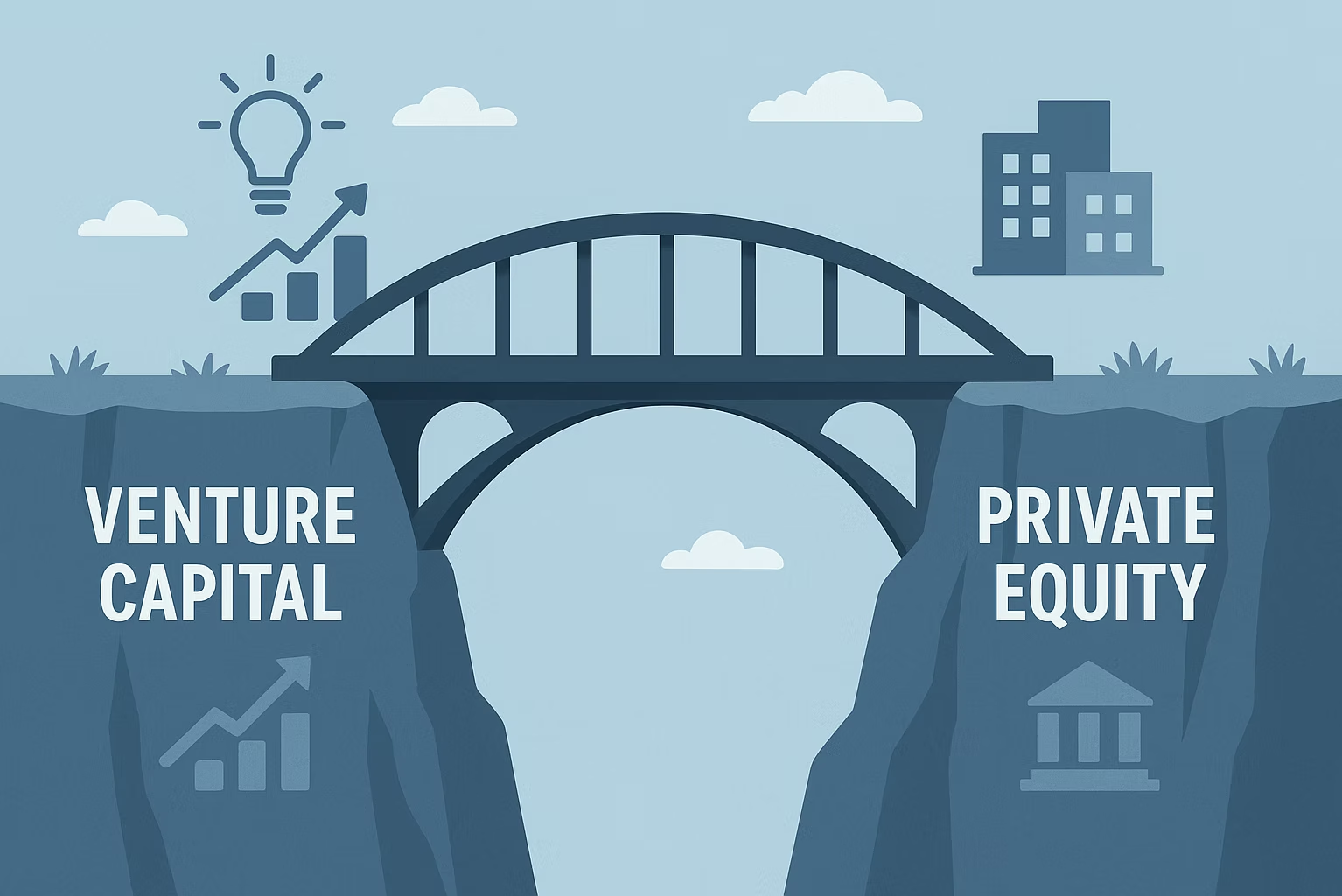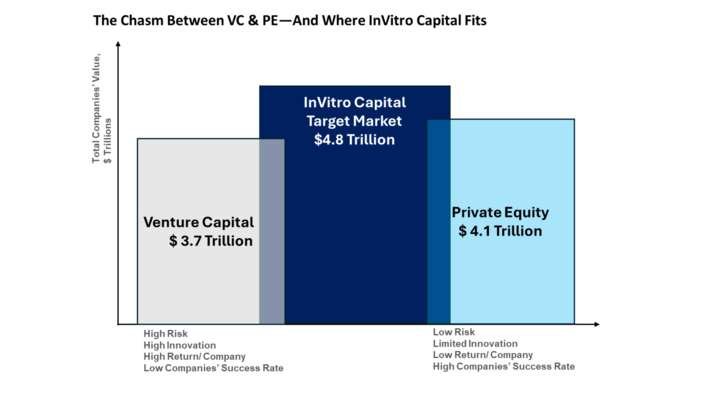
Venture Capital (VC) fuels early-stage disruptors, chasing unicorns and massive returns. On the other hand, Private Equity (PE) thrives on mature businesses, leveraging buyouts and optimization to enhance cash flow.
Both approaches have their strengths, but there’s a significant gap for companies seeking sustainable, profitable growth without burning through capital or banking on a single moonshot exit. These companies aim to deploy meaningful innovation and truly disrupt industries—but where do they turn?
In today’s investment landscape, opportunities like foundational LLM models, AI infrastructure, biotech, and diagnostics align well with VC’s risk appetite. The potential rewards are high, though the journey is loaded with high failure rates and the need for extensive capital to back a handful of successful bets. Hence, multiple bets are a must.
However, for startups building AI software, AI agentic solutions, and similar technologies, the space can quickly become crowded. In such cases, execution excellence and capital efficiency are fundamental for success. The typical VC model for these startups often leads to excessive dilution, frustrated LPs and investors, and disheartened founders.
Enter Venture Building
Venture building blends the innovation-driven mindset of VC with the operational rigor of PE, delivering value to investors through:
-
Hands-On Support: Embedded expert teams in product development, marketing, and finance from day one.
-
Capital Efficiency: Prioritizing viable unit economics early, steering clear of the “grow-at-any-cost” approach.
-
Flexible, Quicker Exits: Targeting mid-market exits ($50M–$200M) or strategic scaling, offering alternatives to the all-or-nothing success model.
-
Curated Portfolio: A focused selection of ventures, each with a higher likelihood of sustainable success.
This offers the best of both worlds: innovation with discipline, and growth with profitability. Venture builders claim the unserved chasm between venture capital and private equity firms—an area that allows for building massive, innovative companies with discipline and structured investment.

How Venture Builders Work
Unlike traditional venture capital, which places many small bets on external startups, venture builders create companies in-house—from ideation to exit—using a highly structured, hands-on approach. This model features:
-
Internal ideation based on deep market research
-
Shared infrastructure (tech, finance, marketing, HR) to reduce cost and increase speed
-
Staged funding with more favorable terms for both investors and founders
-
Strategic talent deployment to help teams scale faster and smarter
The result?
-
Investors gain stakes in industry-defining companies at significantly lower valuations and with greater control—often generating 10x multiples compared to the 2x typically seen in traditional VC.
-
Startups reach profitability faster, unlocking multiple liquidity avenues—including secondaries, PE exits, and debt restructuring—typically within 3 to 5 years, compared to 9 to 10 years in traditional VC.
Not All Venture Builders Operate the Same
Not all venture builders operate the same way. While some follow the models outlined above, others take a different approach—each falling into one of three core structural types.
-
Type A: Fully financed until profitability or exit. (This is the model outlined above.)
-
Type B: Partially financed with one external round. (Still relatively capital efficient and structured.)
-
Type C: Multiple external funding rounds (traditional VC model). This resembles venture capital more than venture building, carrying the same risks and illiquid nature.
Understanding the underlying model is critical—because the right structure directly impacts ownership, exit timing, and investor returns.
Proven Success in the Venture Builder Model
The venture builder model has already proven its success by producing category-defining companies:
-
Hims & Hers Health: Telehealth solutions, valued at over $2.8 billion (NYSE: HIMS)
-
Snowflake: Enterprise data storage, exceeding $58 billion market cap (NYSE: SNOW)
-
Delivery Hero: Global food delivery built by Rocket Internet, valued at $9.2 billion (Frankfurt: DHER)

The Future of Private Market Investing
As family offices look to optimize return while minimizing risk, venture builders offer a compelling new asset class: one that is engineered for capital efficiency, operational excellence, and strategic liquidity.
In a market defined by inflated valuations, capital inefficiency, and widening risk-reward imbalances, the venture builder model offers a clear path forward. It bridges the chasm between venture capital’s appetite for innovation and private equity’s discipline around returns—delivering companies that are built to scale, built to last, and built to exit.
For investors seeking intentional growth, faster liquidity, and real alignment with founders, venture builders aren’t just an alternative—they’re the next evolution of private market investing.



